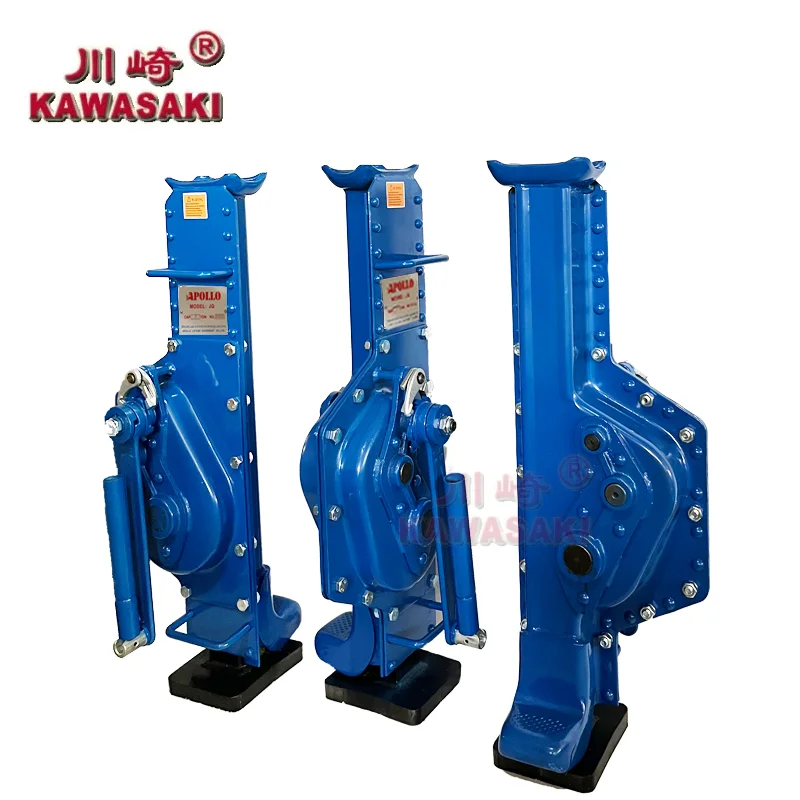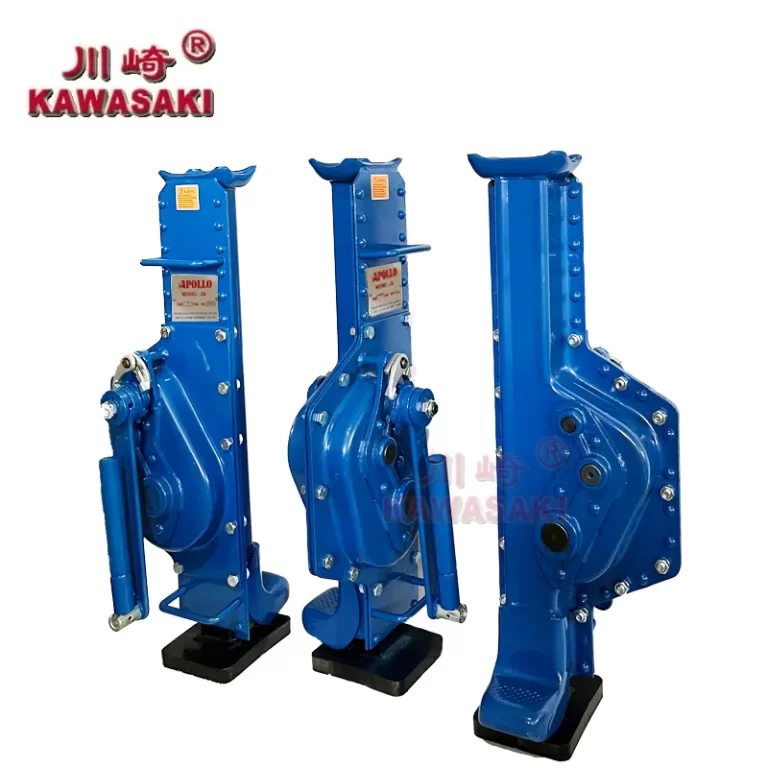Hydraulic jacks are essential tools used in a wide range of applications, from automotive repairs to industrial lifting operations. These devices rely on hydraulic pressure to lift heavy loads, making them incredibly effective and efficient for tasks that require high force but limited physical effort. This article explores the scope and particularity of hydraulic jacks, discussing their uses, working principles, types, advantages, and limitations.
1. Introduction to Hydraulic Jacks
A hydraulic jack is a mechanical device that uses hydraulic force to lift heavy objects. It consists of a cylinder and piston arrangement where fluid is forced into the cylinder under high pressure, causing the piston to move and lift the load. The concept of hydraulic jacks is based on Pascal’s Law, which states that when a confined fluid is subjected to pressure, the pressure is transmitted equally in all directions. This principle allows a small force applied to a small piston to be amplified into a much larger force on a larger piston, making the lifting of heavy loads possible with relatively little manual effort.
2. Working Principle of Hydraulic Jacks
Hydraulic jacks operate based on the simple yet effective principles of fluid mechanics. The core of the mechanism is a piston that moves within a cylindrical chamber. The hydraulic fluid (typically oil) is pumped into this chamber under high pressure. This increases the fluid’s pressure, causing the piston to move. Since hydraulic fluid is incompressible, it transmits pressure uniformly throughout the system, which results in a large force being exerted on the load.
The amount of force generated by the hydraulic system is proportional to the ratio of the areas of the small and large pistons, as described by Pascal’s Law. The larger the area of the piston, the greater the lifting force it can generate. This relationship enables hydraulic jacks to lift heavy loads without requiring large manual input.
3. Types of Hydraulic Jacks
Hydraulic jacks come in various types, each designed for specific tasks and applications. The most common types include:
3.1. Bottle Jacks
Bottle jacks are compact and portable, with a vertical design resembling a bottle. They are typically used in automotive repairs, such as lifting a vehicle for tire changes or maintenance. Bottle jacks are known for their high lifting capacity relative to their size, making them ideal for use in tight spaces or for smaller lifting operations. Their lifting range is usually between 5 to 50 tons, depending on the model.
3.2. Floor Jacks
Floor jacks, or trolley jacks, are large, wheeled jacks commonly used in garages and workshops. They have a horizontal design and feature a long handle for manual pumping, which makes them suitable for lifting cars and other large loads. Floor jacks are equipped with a lifting arm that can extend to different heights, providing flexibility in lifting a variety of vehicles and machinery.
3.3. Car Scissor Jacks
Scissor jacks are another type of hydraulic jack typically used in automotive repair. They are compact and lightweight, often found in car trunks as part of the vehicle’s emergency equipment. Scissor jacks operate by using a screw mechanism in conjunction with hydraulic pressure, and they are generally suitable for lifting lighter vehicles for tire changes or minor repairs.
3.4. Pneumatic Hydraulic Jacks
Pneumatic hydraulic jacks combine the force of air pressure with hydraulic fluid to operate the lifting mechanism. These jacks are often used in industrial settings where heavy machinery needs to be lifted quickly and efficiently. They are capable of providing high lifting capacities with relatively less effort, especially when air compressors are available.
3.5. High-Lift Jacks
High-lift jacks are designed for lifting vehicles or equipment that require a greater lifting range, such as off-road vehicles or construction machinery. These jacks are typically used in situations where more clearance is needed, and their extended reach makes them ideal for rugged environments.
4. Scope of Hydraulic Jacks
Hydraulic jacks have a broad range of uses across many industries, including automotive, construction, manufacturing, and maintenance. Their ability to lift heavy loads with minimal physical effort has made them indispensable in a variety of fields.
4.1. Automotive Industry
One of the most common applications of hydraulic jacks is in the automotive industry. They are used for lifting vehicles to perform maintenance tasks such as tire changes, brake repairs, and suspension work. Hydraulic bottle jacks and floor jacks are often employed in garages, repair shops, and even in emergency roadside situations. Hydraulic jacks are also critical for lifting vehicles during mechanical repairs where other equipment might not be effective.
4.2. Construction and Civil Engineering
In construction, hydraulic jacks are used for heavy lifting, such as raising concrete slabs, moving large building components, or positioning structural steel beams. They are also used in applications like formwork lifting, foundation leveling, and the installation of large prefabricated components. High-lift jacks are particularly useful in these scenarios, as they allow workers to lift objects that are too large or heavy for other equipment.
4.3. Industrial Manufacturing
Hydraulic jacks are commonly used in industrial settings where precision lifting and heavy load handling are required. These can include the assembly of machinery, material handling, and factory operations. They are particularly useful in situations where space is limited or where large equipment needs to be maneuvered in a controlled manner. The ability to lift heavy components without risking damage makes hydraulic jacks invaluable in these environments.
4.4. Maintenance and Emergency Situations
Hydraulic jacks play a critical role in emergency situations, particularly in rescue operations, such as those used in car accidents or collapsed structures. The jacks are used to lift heavy debris or vehicles to extricate trapped individuals. Similarly, hydraulic jacks are used for emergency repair and stabilization of heavy equipment in industries such as mining, transportation, and shipping.
5. Advantages of Hydraulic Jacks
Hydraulic jacks offer several advantages that make them a preferred choice in lifting operations:
5.1. High Lifting Capacity
Hydraulic jacks can lift very heavy loads, often far beyond what is possible with mechanical jacks or other lifting devices. The use of hydraulic pressure enables them to generate immense force with minimal input, making them ideal for tasks like lifting cars, trucks, and machinery.
5.2. Ease of Use
Compared to mechanical or manual jacks, hydraulic jacks are much easier to use. The force required to lift heavy loads is significantly reduced, and the lifting process can be completed with minimal physical effort. This ease of use makes hydraulic jacks particularly suitable for both professionals and casual users.
5.3. Precision Control
Hydraulic jacks offer precise control over the lifting process. The force and height at which the load is lifted can be adjusted gradually, ensuring stability and minimizing the risk of accidents. This level of control is especially useful in applications where delicate handling is required.
5.4. Durability and Reliability
Hydraulic jacks are designed to withstand harsh conditions and heavy usage. They are built from durable materials such as steel, which allows them to operate effectively even in demanding environments. With proper maintenance, hydraulic jacks can have a long service life, making them a reliable tool for lifting and maintenance tasks.
6. Limitations of Hydraulic Jacks
While hydraulic jacks have many benefits, they are not without their limitations:
6.1. Limited Lifting Range
Most hydraulic jacks have a limited lifting range, meaning that they can only raise a load to a certain height. This limitation can be problematic when larger lifting heights are required. For this reason, high-lift jacks or additional lifting equipment may be necessary for specific applications.
6.2. Sensitivity to Leaks
Hydraulic jacks depend on hydraulic fluid to operate. If there is a leak in the system, the jack may lose its lifting power or fail to function altogether. Regular maintenance is necessary to ensure that the hydraulic fluid remains sealed and properly pressurized.
6.3. Weight and Portability
While hydraulic jacks are powerful, they can be heavy and cumbersome, particularly in the case of larger models. This can make them less portable, especially for tasks that require frequent mobility or in situations where space is tight.
6.4. Cost
Hydraulic jacks can be more expensive than manual or mechanical jacks, especially for high-capacity models. While they offer greater power and ease of use, their higher initial cost can be a deterrent for individuals or small businesses with limited budgets.
7. Conclusion
Hydraulic jacks are indispensable tools in many industries, providing powerful lifting capabilities with minimal manual effort. They are highly valued in automotive repair, construction, industrial manufacturing, and emergency rescue operations. Their versatility, ease of use, and ability to lift heavy loads make them an essential part of many toolkits. However, their limitations, including weight, cost, and sensitivity to fluid leaks, should also be considered when choosing the right equipment for a specific application. As technology continues to evolve, hydraulic jacks will likely become even more efficient and versatile, further enhancing their role in various industries.


